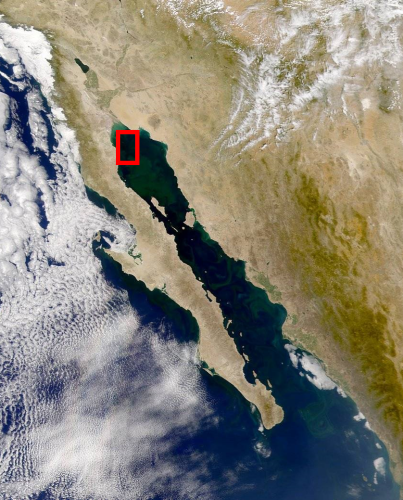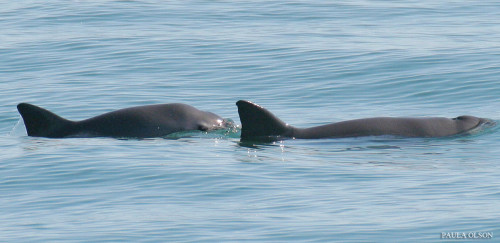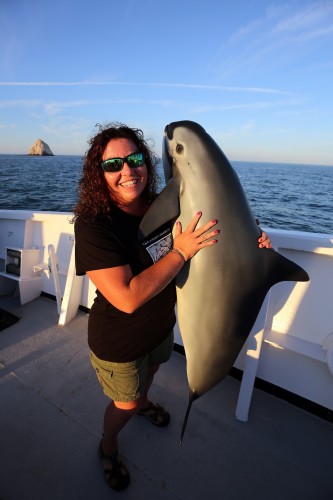
The vaquita (Phocoena sinus) is a critically endangered species of porpoise found only in a small part of the Upper Gulf of California, Mexico. Less than 100 of these animals are thought to be alive today, and an international team of scientists are currently leading an expedition to obtain a precise abundance estimate of this species. One of Azura’s Associate Scientists, Melody Baran, has joined the expert team of marine mammalogists on this quest to find and count the vaquita. She shares the following blog article which includes inside information about this spectacular Vaquita Expedition 2015.
Day 10 of the ‘Log from the Sea of Cortez’
-by Melody Baran
Sept 26 began the Vaquita Expedition 2015. An international team of 13 scientists, equipment, waterproof bags, and one guitar left San Felipe, Mexico, and rode out in a couple of pangas to meet and board the anchored R/V Ocean Starr. This legendary-among-scientists vessel was decommissioned as the NOAA ship David Starr Jordan in 2008 but is now chartered for this project from Stabbert Maritime with her new name the Ocean Starr. She has been known to many as the flagship of marine mammal shipboard surveys, and it is a great privilege to be on board.
I am one of the two project data recorders, and our role is akin to air traffic control. Working with two independent teams of observers, we sit at a central station on the flying bridge (the top-most deck of the ship) where three scientists, each using the “big eye” (large, 25-power) binoculars, scan for marine mammals. Below our deck is another scanning team with which I have a headset communication link. We are to record all of the marine mammal sightings data, including bearing, distance, species, direction of travel, speed of travel, and group size, into the computer program often from both teams at the same time. I have some experience with this two-team configuration from a few other projects, and I am honored to be able to use past experience to serve this very important project.


01 Oct 2015 was quite an amazing day. More than two dozen dignitaries, including the head of the Mexican Ministry of the Environment and Natural Resources; the Commissioner of Fisheries; the Governor of the State of Baja California; the regional Naval Admiral; and several other officials, security, and press, boarded the ship, spent some time getting acquainted with the project, and were able to see three vaquita with the help of our expert Mexican observers! It was a day that will go down in history for lots of folks. Vaquita are rare, tiny, and extremely skittish, so the whole event was really quite miraculous. Honestly, the amount of things that lined up to make this even possible is astounding. It was probably one of the best things that could have happened.
In addition to vaquita, we’ve seen common dolphins, bottlenose dolphins, fin whales, Bryde’s whales, and loads of sea lions. Birds we’ve seen include blue-footed boobies, brown boobies, magnificent frigate birds, yellow-footed gulls, jaegers, Heerman’s gulls, elegant terns, and sooty shearwaters.

Here are some links with info on the project.
Vaquita Expedicion 2015 Info
https://swfsc.noaa.gov/MMTD-Vaquita2015/
Photos
https://www.flickr.com/photos/nmfs_northwest/sets/72157659101243641/
This flicker site will be updated with pictures.

